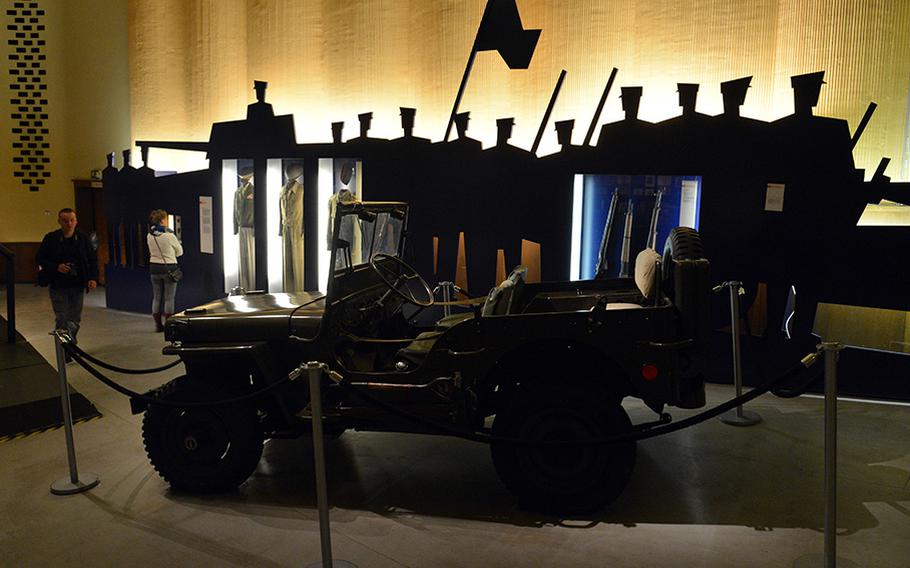
A jeep, uniforms and weapons are displayed in the former Outpost Theater that today makes up a section of the Allied Museum in Berlin. The museum is in two buildings and an open-air site that was once part of the American garrison in Berlin. (Michael Abrams/Stars and Stripes)
The Berlin Wall had fallen. The Iron Curtain that once divided Europe had been raised. The Cold War was over.
It was 1994, and time for the Allies — the United States, United Kingdom and France — and the Russians to leave Berlin.
Forty-nine years after occupying the city at the end of World War II the Allies were gone, and in the years since, most traces of them in what became the capital of a unified Germany have disappeared.
Luckily, there is the Allied Museum, a place that traces and remembers their time in Berlin.
The museum is housed in two buildings that once belonged to the American garrison in Berlin: the old Outpost Theater and the former Nicholson Memorial Library, named after Maj. Arthur D. Nicholson Jr., who was shot and killed by a Soviet sentry in 1985 in East Germany.
Anyone who was stationed in West Germany through the Cold War would recognize the movie theater building --- there were many similar theaters on U.S. bases. There is still an electric sign over the inside door that reads “National Anthem playing now, please wait.”
The permanent exhibit called “From the end of the war to the Berlin Airlift” traces the years from 1945 to 1950. Displayed are not only uniforms, weapons and a jeep, but also photos and brochures from the Berlin Consolidated School and clippings from the Berlin Observer — the garrison’s newspaper. Items from the 1947 wedding of an American servicemember to a German woman are there, too.
The open-air site between the two buildings displays a British Hastings TG 503 cargo plane, the dining car of a French military train, and the final Checkpoint Charlie guardhouse. It was used from 1986 until it was removed on June 22, 1990.
The exhibit “From Checkpoint Charlie to the Two-plus-Four Treaty,” in the Nicholson Memorial Library, covers 1951 to 1994. It traces the everyday life of Allied soldiers, the construction and fall of the Berlin Wall, Germany’s reunification and the farewell of Allied troops from the city.
Among the highlights are a painting on a door from Andrews Barracks from around 1980 that depicts a Berlin Brigade soldier on the back of an eagle defending the city from a Soviet soldier riding a bear; front page stories from The Stars and Stripes on the construction of the Berlin Wall in 1961; and the final edition of the Berlin Observer, dated July 15, 1994. The life-size model of a tunnel used for spying is definitely worth a look.
Near the museum is the sculpture “The Day the Wall Came Down,'' by American artist Veryl Goodnight. Featuring four bronze horses jumping over the crumbled Berlin Wall, it was dedicated by former President George H.W. Bush in 1998.
Know and Go: Allied MuseumAddress: Clayallee 135, 14195 Berlin. Parking is available nearby. By subway take U3, or bus lines 115 or X83 to the Oskar-Helene-Heim stop.Times: 10 a.m. to 6 p.m. Tuesdays through Sundays.Costs: Admission is free.Information: Website: http://www.alliiertenmuseum.de/en/home.html